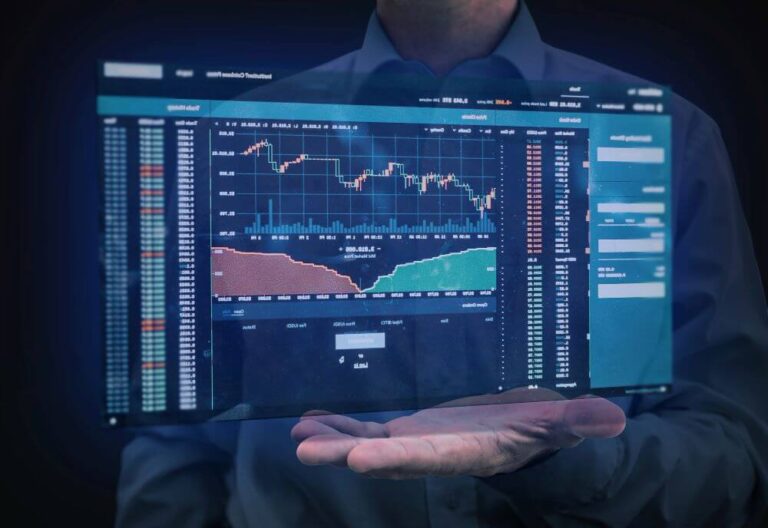The future of forex prop trading in the age of AI will be shaped by fast technology, smarter automation, and real-time data analysis. These changes are making it easier and quicker for traders to react to the market while giving them more information to help them make decisions. Intelligent systems can spot patterns and possible risks, leading to better trading results.
A prop firm for forex traders is set to benefit from these advancements, as AI helps manage risk, predict trends, and even automate complex trades with impressive speed. As more traders look for firms that can keep up with new technology, the role of AI will only grow. Anybody interested in where prop trading is headed should watch how these tools continue to reshape trading.
Evolution of Forex Prop Trading in the Age of AI
Forex prop trading is changing as AI becomes more common. Traders use advanced tools and new approaches to keep up with fast-moving markets and higher demands for accuracy.
AI-Powered Trading Technologies
AI tools process large amounts of data faster than any human. Algorithms can pick up price patterns, study news headlines, and spot trends within seconds. These systems work around the clock, scanning the markets for trade chances that meet set rules.
Some AI programs test strategies using past market data. This lets traders adjust their tools to fit current market trends. AI brings more accuracy to price predictions and can adapt to changing conditions. For traders, this often means faster order execution and fewer human mistakes.
AI-supported dashboards also help traders watch different currency pairs in real time. Key information is shown clearly, allowing them to act quickly if a good trade appears.
Changing Skill Sets for Traders
The rise of AI means that traders need more than just a strong grasp of market basics. Now, they often need to work with advanced tech tools and even basic programming. Knowing how to use algorithmic trading systems can set a trader apart.
Soft skills also matter. Problem-solving, quick decision-making, and the ability to understand AI insights are valuable. Traders learn to balance machine analysis with human judgment, checking trade signals and not just trusting the tech.
Training is shifting, too. More courses focus on learning how algorithms work, spotting when a model might be wrong, and working with new types of data that AI systems collect.
Impact on Risk Management Practices
Risk management now uses AI programs that watch for market shifts and highlight possible risks in real time. AI helps by running stress tests, spotting patterns that might signal losses, and giving early warnings for risky trades.
Automated systems can block trades that go over set risk limits. This cuts the chance of large losses that can wipe out an account. Traders also use AI-driven tools to adjust their strategies as markets shift, making their trades more flexible.
At the same time, AI tracks compliance with trading rules set by the firm. This adds another layer of control, helping to protect both the trader and the firm from mistakes. Risk control is now faster and more data-driven.
Opportunities and Challenges for the Future
AI is pushing forex prop trading towards greater use of advanced technology for decision-making and process automation. This change brings new business ideas and questions about oversight and trading rules.
Algorithmic Decision-Making and Human Oversight
AI-powered trading uses machines to scan markets, spot trends, and place trades faster than humans can. This offers benefits such as quick reactions to news, better use of historical data, and fewer mistakes caused by emotion.
However, letting machines do all the trading makes it hard to spot unfair trades or poor decisions. Human oversight is still needed to review trades, set rules for programs, and react to system errors. Most firms now use teams where both traders and AI work together, with humans setting limits and making sure systems stay safe and fair.
Effective oversight protects client money and helps catch problems early. Training staff to understand both AI tools and market risks is now very important for prop firms.
Regulatory Implications in an AI-Driven Landscape
With AI shaping trading decisions, rules and expectations from regulators are changing fast. Prop trading firms face new pressure to record and explain trades, making actions traceable and transparent to authorities.
Regulators expect firms to prove their AI systems follow fair market practices and do not break trading laws. Algorithms must be updated and tested often to prevent abuse or technical errors. Strong record-keeping is now a standard request from regulators to check market safety.
Adapting to these changes may lead to higher costs for compliance, but it helps prevent fines and protects the firm’s reputation. Staying updated on rule changes is now required for any firm using AI-driven trading.
Emerging Business Models in Proprietary Trading
New business ideas are growing fast in prop trading because of AI. One example is using machine learning to measure a trader’s skill, which helps decide how much money to give them for trading.
Some firms now offer programs where traders work with AI tools, mixing computer power with human skills. More firms are building models that offer instant data, risk checks, and new training for traders, making it easier for new people to enter trading.
Many new models focus on clear rules and faster funding while using technology to guide both trader growth and risk controls. This makes forex prop trading more open to a wider group of traders with different backgrounds.
Conclusion
AI is changing forex prop trading by making trades faster and more data-driven. New tools can spot trends, manage risk, and automate simple tasks. Traders may benefit from learning to use these advanced systems.
The industry is expected to keep growing as technology moves forward. Those who adapt to AI tools are likely to see new opportunities in the market.


